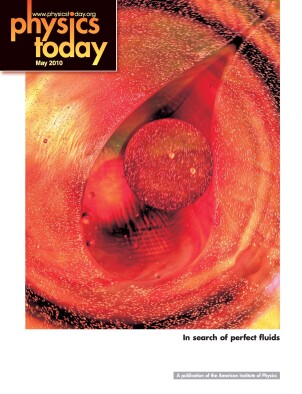PCAST urges more coordination of nanotech R&D
DOI: 10.1063/1.3431326
The federal government should sharpen the focus of its nanotechnology environmental, health, and safety R&D program to address the specific questions that industry and regulatory agencies have as nanotechnologies are commercialized. That opinion is from a report released on 25 March from the President’s Council of Advisors on Science and Technology. PCAST also recommends strengthening the inter-agency coordinating mechanism for the National Nanotechnology Initiative (NNI) by recruiting two new individuals, one to coordinate the EHS R&D efforts that are dispersed throughout the government and the other to oversee the development of standards, which are critical for many aspects of EHS and also for commercialization and testing of products.
The report finds that the 10-year-old NNI “has had a catalytic and substantial impact on the field of nanotechnology,” said Maxine Savitz, cochair of the PCAST working group that performed the assessment. The US, she told reporters, continues to lead the world in nanotechnology by various metrics, including numbers of publications, citations, and patents, and the variety of products commercialized. But competition from other nations has risen “dramatically,” she said, with the nanotechnology R&D programs in Europe and Asia growing much faster than those in the US. And in the past few years, China has overtaken the US in the number of nanotechnology-related patent filings, Savitz added. Already in 2005 PCAST had warned that the US was in danger of losing its lead in nanotechnology R&D (see Physics Today, August 2005, page 28
President Obama has requested $1.8 billion for the NNI in his FY 2011 budget proposal, which for the first time proposes new line-item funding for the Food and Drug Administration and the Consumer Product Safety Commission to assess the health and safety of products that incorporate nanotechnology. The PCAST report also recommends that the manufacturing R&D component of the NNI be doubled to 6% of the total effort over five years, while stressing that those new resources not be taken from the NNI’s basic research program.
The NNI EHS budget has grown from $35 million in 2005 to the $117 million proposed by Obama for FY 2011. Clayton Teague, director of the inter-agency National Nanotechnology Coordination Office, said the $250 million that the US has devoted to nanotech EHS R&D from 2005 through 2009 probably exceeds that of the rest of the world during that period.
But the PCAST working group said that the EHS research activities could be better linked to identify the plausible risks associated with the products of nanotechnology and to address the knowledge gaps and decision-making needs within government and industry. Ed Penhoet, the group’s other cochair, said that further increasing funding for EHS R&D without improving that linkage “is not necessarily a wise thing to do.” Penhoet said EHS R&D needs to be structured “in such a way that it answers the questions that are necessary for decision making by government and by industry.” Teague said that an individual will be named soon to assume the EHS coordinating job.
The PCAST report also recommends an unspecified increase in federal support for “signature initiatives” that would apply nanotechnology to specific grand challenges, such as novel materials that can capture solar energy more efficiently.
More about the Authors
David Kramer. dkramer@aip.org
